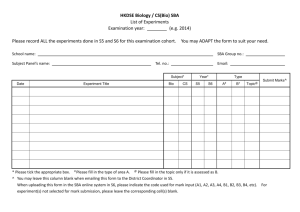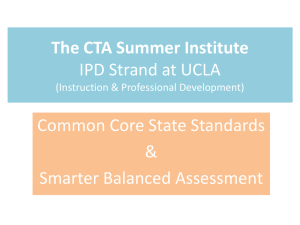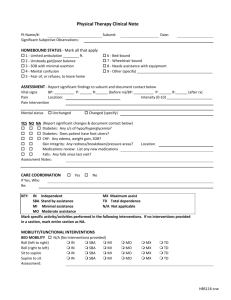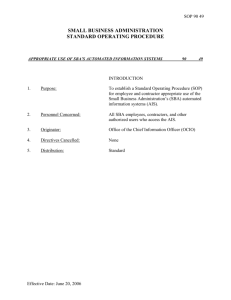High Resolution Array Comparative Genomic Hybridization in
advertisement
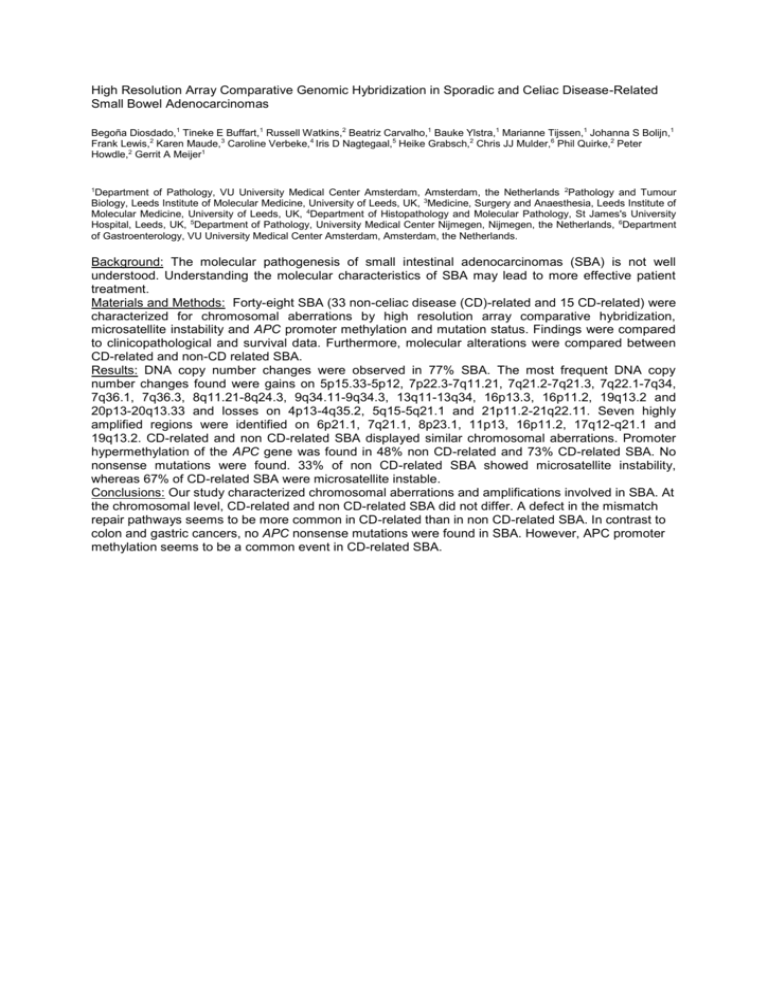
High Resolution Array Comparative Genomic Hybridization in Sporadic and Celiac Disease-Related Small Bowel Adenocarcinomas Begoña Diosdado,1 Tineke E Buffart,1 Russell Watkins,2 Beatriz Carvalho,1 Bauke Ylstra,1 Marianne Tijssen,1 Johanna S Bolijn,1 Frank Lewis,2 Karen Maude,3 Caroline Verbeke,4 Iris D Nagtegaal,5 Heike Grabsch,2 Chris JJ Mulder,6 Phil Quirke,2 Peter Howdle,2 Gerrit A Meijer1 1 Department of Pathology, VU University Medical Center Amsterdam, Amsterdam, the Netherlands 2Pathology and Tumour Biology, Leeds Institute of Molecular Medicine, University of Leeds, UK, 3Medicine, Surgery and Anaesthesia, Leeds Institute of Molecular Medicine, University of Leeds, UK, 4Department of Histopathology and Molecular Pathology, St James's University Hospital, Leeds, UK, 5Department of Pathology, University Medical Center Nijmegen, Nijmegen, the Netherlands, 6Department of Gastroenterology, VU University Medical Center Amsterdam, Amsterdam, the Netherlands. Background: The molecular pathogenesis of small intestinal adenocarcinomas (SBA) is not well understood. Understanding the molecular characteristics of SBA may lead to more effective patient treatment. Materials and Methods: Forty-eight SBA (33 non-celiac disease (CD)-related and 15 CD-related) were characterized for chromosomal aberrations by high resolution array comparative hybridization, microsatellite instability and APC promoter methylation and mutation status. Findings were compared to clinicopathological and survival data. Furthermore, molecular alterations were compared between CD-related and non-CD related SBA. Results: DNA copy number changes were observed in 77% SBA. The most frequent DNA copy number changes found were gains on 5p15.33-5p12, 7p22.3-7q11.21, 7q21.2-7q21.3, 7q22.1-7q34, 7q36.1, 7q36.3, 8q11.21-8q24.3, 9q34.11-9q34.3, 13q11-13q34, 16p13.3, 16p11.2, 19q13.2 and 20p13-20q13.33 and losses on 4p13-4q35.2, 5q15-5q21.1 and 21p11.2-21q22.11. Seven highly amplified regions were identified on 6p21.1, 7q21.1, 8p23.1, 11p13, 16p11.2, 17q12-q21.1 and 19q13.2. CD-related and non CD-related SBA displayed similar chromosomal aberrations. Promoter hypermethylation of the APC gene was found in 48% non CD-related and 73% CD-related SBA. No nonsense mutations were found. 33% of non CD-related SBA showed microsatellite instability, whereas 67% of CD-related SBA were microsatellite instable. Conclusions: Our study characterized chromosomal aberrations and amplifications involved in SBA. At the chromosomal level, CD-related and non CD-related SBA did not differ. A defect in the mismatch repair pathways seems to be more common in CD-related than in non CD-related SBA. In contrast to colon and gastric cancers, no APC nonsense mutations were found in SBA. However, APC promoter methylation seems to be a common event in CD-related SBA.
